For most people, a laptop remains the best portable device for productivity. The physical keyboard is something tablets can’t match, though the latter is a better option for gaming or watching videos.
Wouldn’t it be great if there was one device that could do all of these and more? Depending on your needs, there might just be a solution among 2-in-1 laptops, which have become much more popular in recent years.
There are two main form factors – a tablet with detachable keyboard and laptop with a 360° hinge. Both let you type and touch the screen, and there are devices running Windows, Android, iOS and ChromeOS these days.
However, a word of warning: you’ll be hard-pressed to find a device that excels as both a tablet and laptop. Some of the options in this list are also very expensive, so you may be able to buy both for the price of one 2-in-1. But the convenience of having everything in one place shouldn’t be overlooked, especially as these are products that can go everywhere with you.
There’s a range of options here, catering to many different price points. If you’re interested in a particular product, it’s worth clicking through to our full review of each to learn more about its strengths and weaknesses. Below the chart, you’ll also find in-depth buying advice on what to look for in a 2-in-1 laptop.
Best 2-in-1 laptops 2023
1. Microsoft Surface Pro 9 – Best Overall
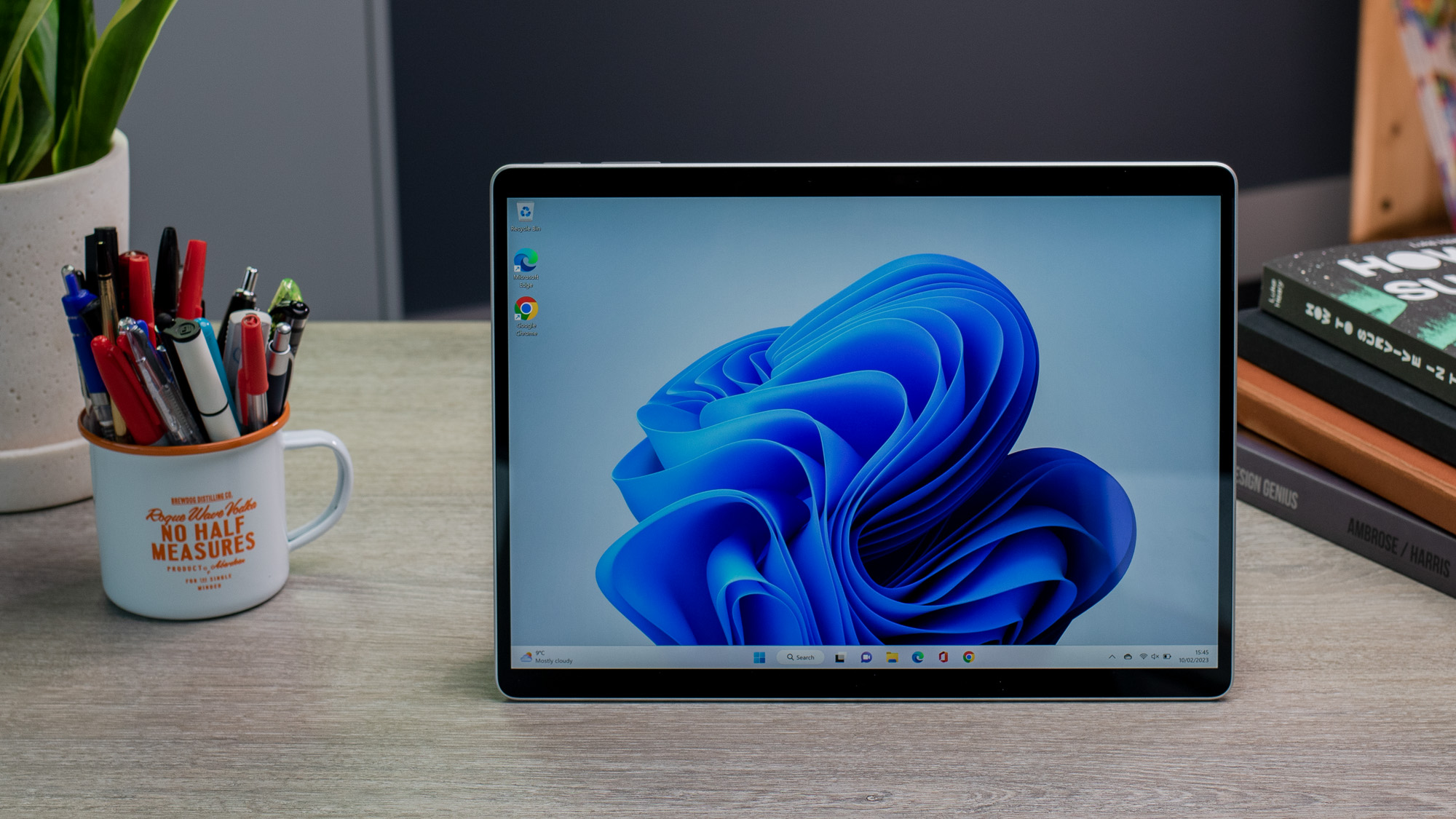
Pros
- Excellent design and display
- Solid battery life
- Great accessories
- Impressive webcam
Cons
- Poor performance on ARM models
- Limited ports
- Keyboard cover sold separately
The Surface Pro 9 retains its crown as the best 2-in-1 you can buy, but only if you get the Intel version.
That adds just 12th-gen Intel CPUs to 2021’s Surface Pro 8, but that device was already excellent. Solid performance combines with the existing premium design and 120Hz display for a great all-round experience.
Video calling and battery life are other key strengths, but they’re actually even better on the new ARM-based model. The SQ3 chip it uses is based on Qualcomm’s Snapdragon 8cx Gen 3, but this can’t compete with Intel on performance and app compatibility, both of which still hold it back.
5G is exclusive to the ARM version, but it’s simply not worth taking the risk for most people. Poor ports and a high price tag remain regardless of the model you choose, but the Intel version still provides the best all-round tablet experience.
When you add the keyboard cover (sold separately), it becomes a convincing laptop replacement. For something smaller and more affordable, consider the Surface Go 3.
2. Samsung Galaxy Book 3 Pro 360 – Best Convertible
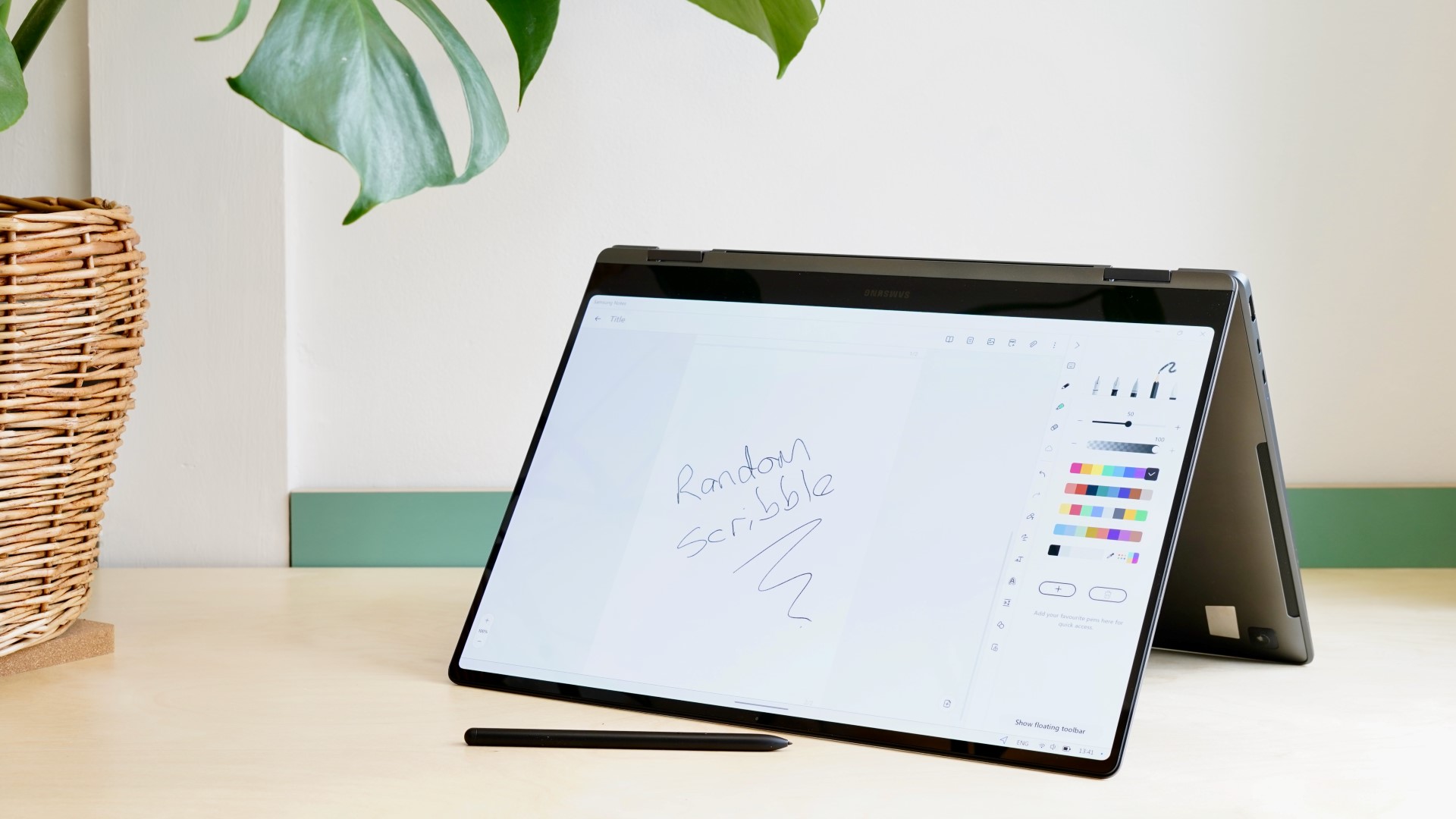
Pros
- Excellent display
- Attractive design
- Impressive performance
- S Pen included
Cons
- Underwhelming keyboard
- Average battery life
Samsung’s laptops seem to get better every year, so it’s no surprise to see the Galaxy Book 3 Pro 360 so high in this list. As the name suggests, it combines the power of a Pro-level device with the versatility of a 360° hinge, and the results are excellent.
Everything centres around the 16in, 120Hz OLED display, which supports both touch and stylus input via the included S Pen. It’s a joy to use, especially when combined with solid Intel 13th-gen performance. It’s a shame not to see a discrete GPU, but there’s plenty of power here for most people.
Despite the thin and light design, there’s still enough space for a good port selection and Full HD webcam, although the keyboard could be better. You’ll also have to make do with average battery life, but this is only a problem if you regularly spend many hours away from the charger.
For most people, this is an easy laptop to recommend. If you’re looking for a Windows 2-in-1 and don’t want to detach the keyboard, this is the device to buy.
3. Apple iPad Pro (12.9in 2022) – Best iPad

Pros
- Superb performance
- Stunning display
- Great cameras and battery life
Cons
- Expensive accessories
- iPadOS doesn't make full use of M1 chip
The 2022 iPad Pro doesn’t change much compared to the 2021 version, but it’s the closest Apple has ever go to a laptop replacement.
This 12.9in model is equipped with the company’s latest M2 chip, stretching its lead in terms of performance. You won’t find any tablet as capable, although few apps push it even close to its potential.
To make the most of the device, you’ll want to pay extra for the Magic Keyboard and Apple Pencil, but they offer a superb typing and navigation experience that beats even the Surface Pro. It’s also worth highlighting that 120Hz display, which now has mini-LED tech for an even better viewing experience.
However, the single biggest reason not to buy the iPad Pro is its software. iPadOS simply cannot rival macOS or Windows in terms of functionality.
With a device this expensive, it’s enough to make you think twice.
4. Lenovo Yoga 7i 16 – Best Battery Life
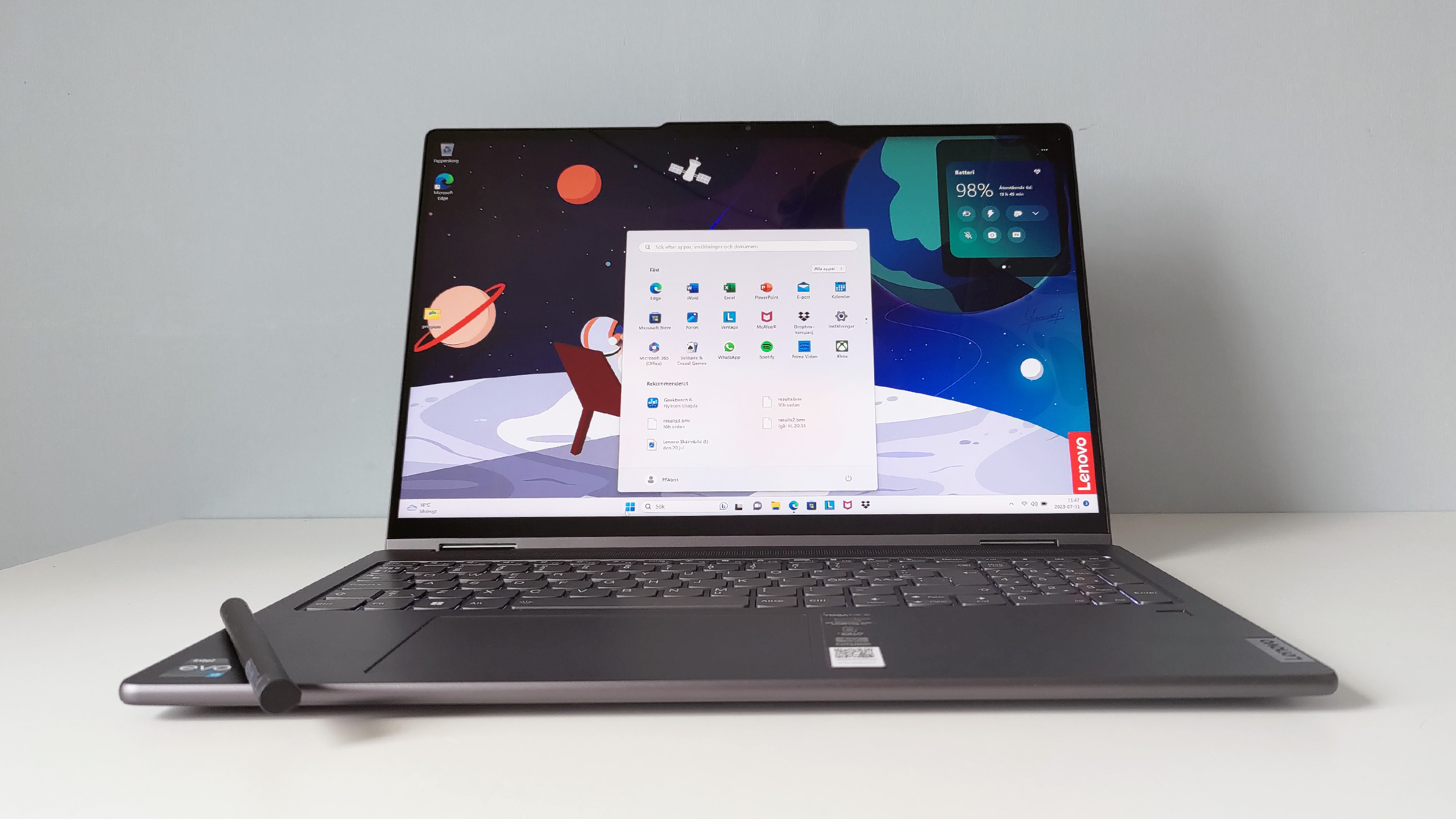
Pros
- Excellent battery life
- Solid performance
- Premium build
- Good included stylus
Cons
- Not the best display
- No dedicated GPU
The Yoga 7i strikes a really good balance between premium features and an affordable price. It offers everything most people are looking for in a convertible, yet won’t break the bank.
Battery life is the standout feature, and means most people can use it for a full working day and have charge to spare. A premium design extends to the included stylus, while the webcam and port selection are both decent.
Performance from a 13th-gen Intel CPU is solid, even if it’s paired with Iris Xe integrated graphics rather than a dedicated GPU. As a result, it’s best suited for general productivity tasks.
Even the display, arguably the weakest aspect of the Yoga 7i, is very usable. But the 16in LCD panel lacks colour accuracy, and doesn’t get bright enough for comfortable outdoor visibility.
That’s still acceptable at this price, though, and the device performs well in most key areas.
5. Huawei MateBook E (2022) – Best Value for Money

Pros
- Impressive OLED display
- Great cameras
- Keyboard case included
- Decent i5 performance
Cons
- Poor battery life
- Frustrating fingerprint sensor
- Only one port
Huawei has dabbled in 2-in-1 devices in the past, but the latest MateBook E is its best effort yet.
The device isn’t dissimilar to the Surface Pro 9 in design – high praise considering it’s significantly more affordable. However, that entry-level model has just an 11th-gen Core i3 model under the hood – most people will probably want to step up to i5, where you’ll find solid all-round performance.
A 12.6in display is slightly smaller than some rivals and only 60Hz, but opting for OLED makes up for it. Huawei has maintained slim bezels around the edge of the display, which house a solid webcam.
There’s also an impressive webcam for video calls, but no Windows Hello face unlock. That means you’ll need to rely on an underwhelming fingerprint sensor built into the power button. There’s also only one USB-C port. The included keyboard cover (with built-in stand) and stylus sold separately are both superb, but battery life is another key weakness.
There may be one too many compromises here for most people, but it remains a compelling option and very good value for money.
6. Asus Zenbook 14 Flip OLED (2023) – Best Display
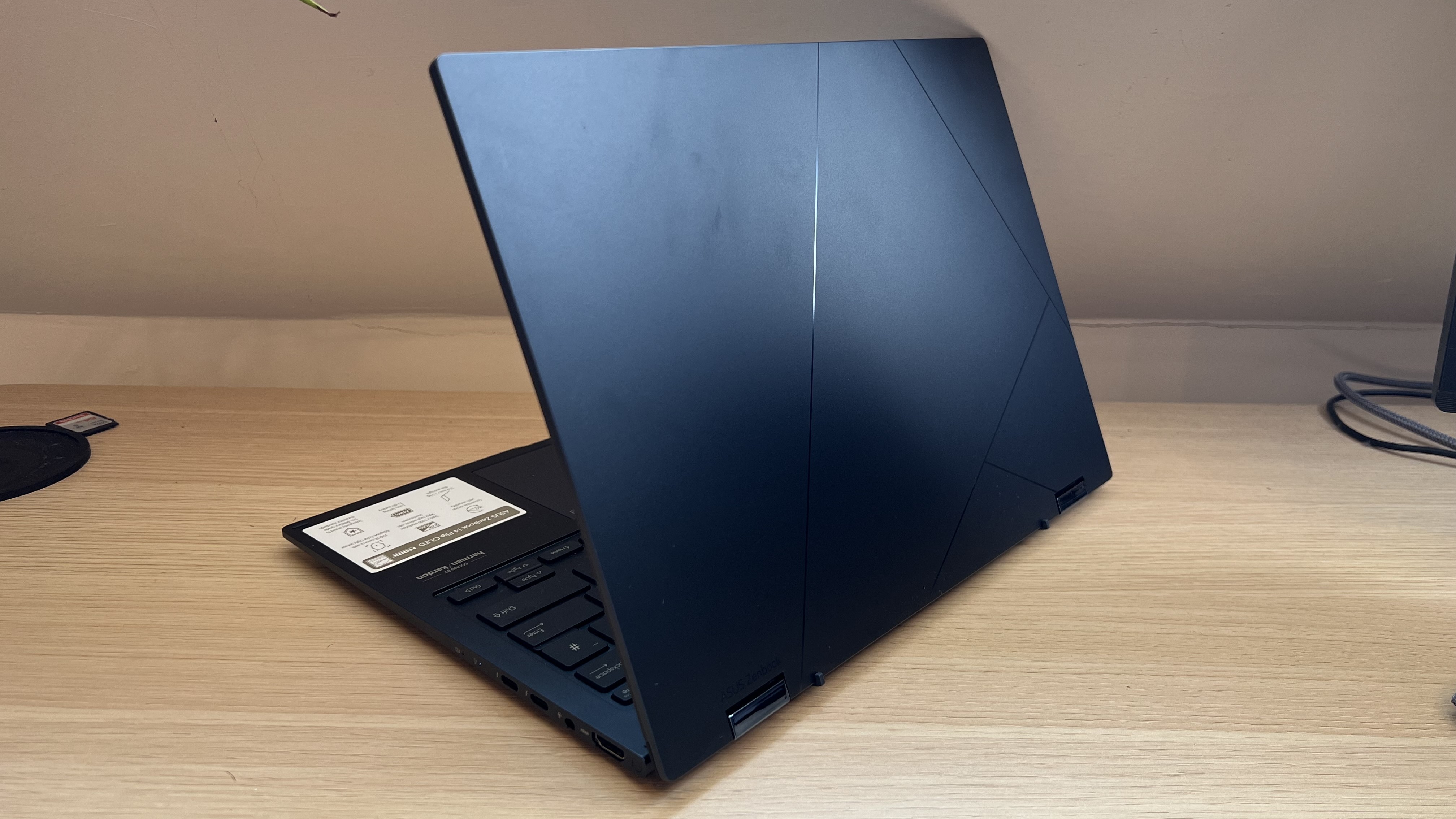
Pros
- Premium convertible design
- Excellent 90Hz OLED display
- Impressive keyboard and trackpad
- Solid battery life
Cons
- Annoying pre-installed apps
- Underwhelming webcam
- Expensive in UK
The 14 Flip OLED’s price is the main thing that counts against it, at least in the UK. But this premium convertible from Asus has a lot going for it.
As the name suggests, that 90Hz OLED touchscreen is the star of the show, offering excellent detail and rich, vibrant colours. You even get a digital stylus included in the box, for which you’ll want to make use of the durable 360° hinge.
Alongside a solid keyboard and trackpad, even if the virtual numberpad built into the latter is pretty pointless. If you can ignore several extra pre-installed Windows 11 apps and don’t want to use the built-in webcam for video calls, you’ll be satisfied with the 14 Flip OLED.
However, you’ll undoubtedly find better value for money elsewhere.
7. Samsung Galaxy Book 3 360 – Great all-rounder
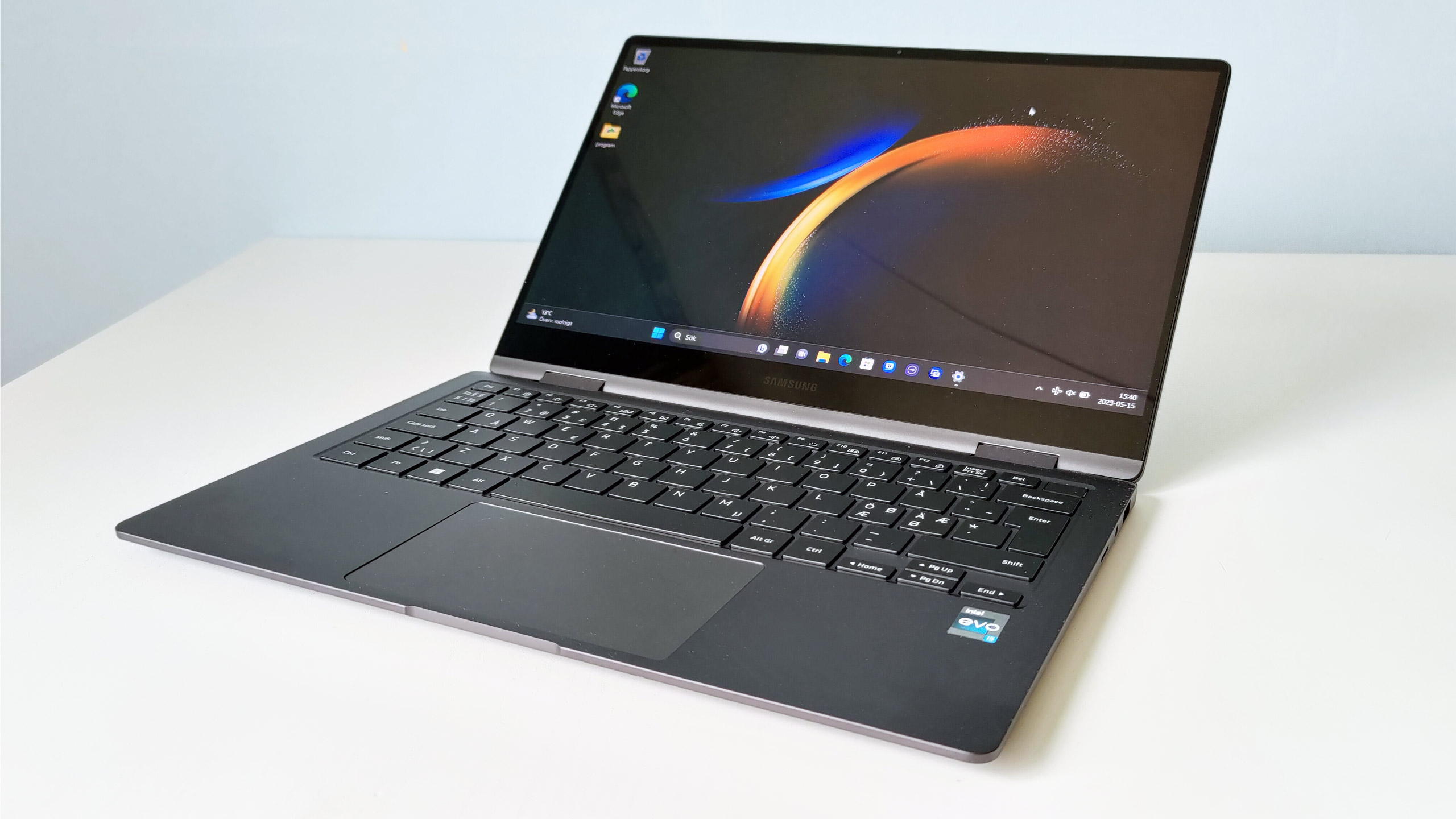
Pros
- Great OLED display
- Premium design
- Good battery life
- Thin and light
Cons
- Performance not the best
- Annoying bloatware
The Galaxy Book 3 360 isn’t quite as good as the Pro version higher in this list, but it’s also significantly more affordable.
It still has a lot going for it, too, including an excellent 13.3in OLED display. Unlike the Pro, it supports touch and the S Pen stylus, which is included. It’s only 60Hz and Full HD (1920×1080) resolution, but neither are an issue once you start using it.
Battery life is also very good, with the 61.1Wh cell that will comfortably last a full day for most people. A thin and light design means it’s very portable and easy with you when travelling, while there’s also a good port selection
Performance from Intel’s 13th-gen CPUs is acceptable, but other laptops seems to be able to extract more power from them. There are also a lot of extra software apps and tools, which soon become annoying if you don’t own other Samsung devices.
But even so, the Galaxy Book 3 360 has plenty of strengths and is definitely worth considering.
8. Asus ROG Flow Z13 – Best For Gaming

Pros
- AAA gaming on a tablet
- Excellent XG Mobile GPU performance
- Impressive 120Hz display
Cons
- Expensive
- Too heavy for most people
- Poor battery life
Gaming on a PC usually requires a permanent desktop or bulky laptop, but Asus has proven that doesn’t need to be the case.
The ROG Flow Z13 offers incredible power within a thin and light design, with a choice between top-spec Intel or AMD CPUs and a discrete RTX 3050 Ti graphics card. Performance drops slightly when running on battery power, but connecting the optional XG Mobile helps deliver desktop-level gaming.
Elsewhere, the large 13.4in Mini-LED display delivers an immersive gaming experience. You get a choice between Full HD or 4K, with both offering a silky-smooth 120Hz refresh rate.
A built-in kickstand and detachable keyboard (included in the price) makes the Flow Z13 impressively versatile, although you might be disappointed by the lack of ports. It’d also have been nice to see some better speakers too, but most gamers will be connecting headphones anyway.
But battery life is a key weakness, with less than 90 minutes of AAA gaming on a single charge. The situation is much better in general use, but at around five hours, it’s still worse than most rivals.
Ultimately, the Flow Z13’s high price tag will put people off. But it’s an exciting first step into the world of gaming 2-in-1s.
9. Lenovo Yoga Book 9i – Most Unique
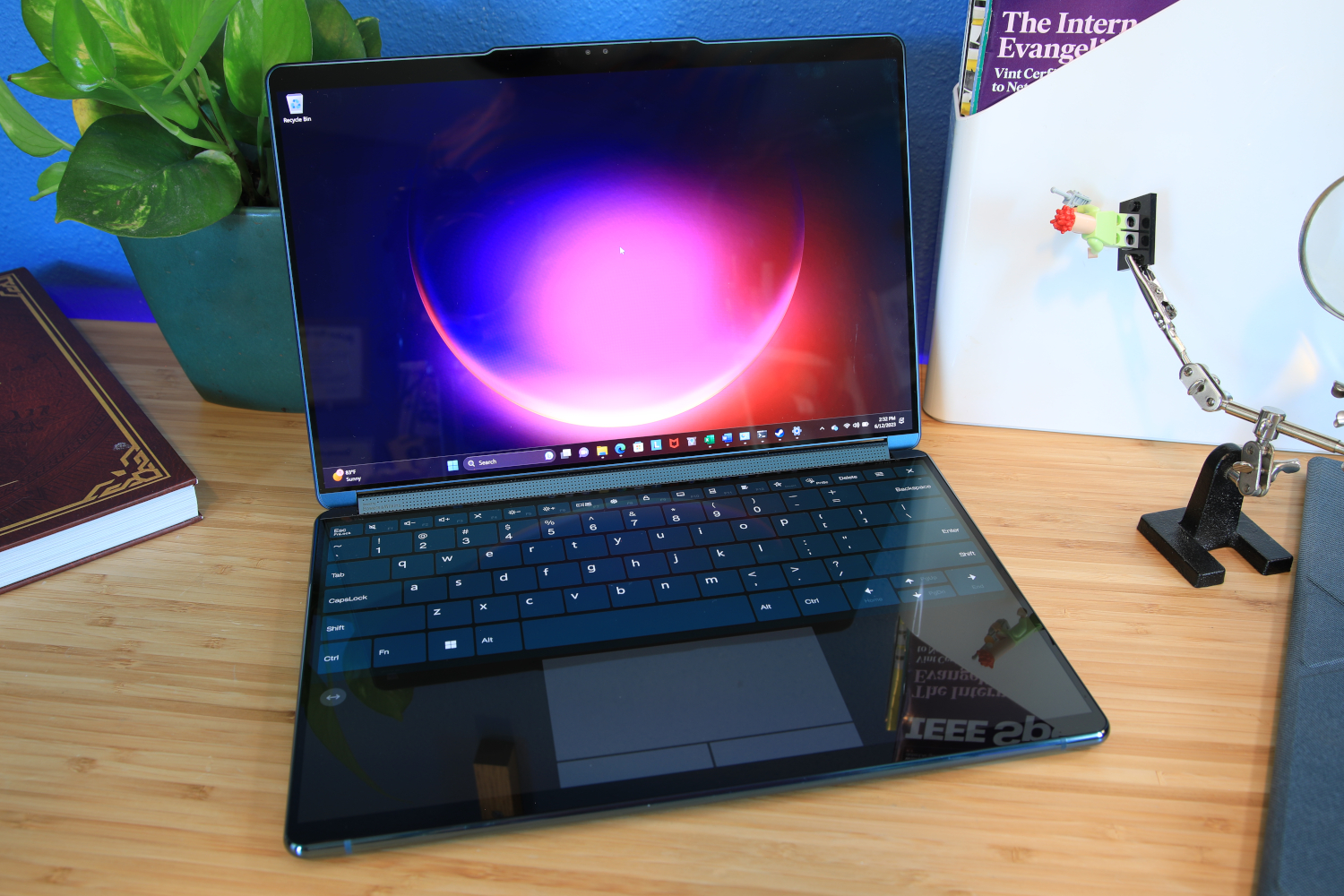
Pros
- Versatile dual-screen design
- Impressive OLED displays
- Great audio
- Excellent webcam and microphones
Cons
- Disappointing keyboard and touchpad
- Performance could be better
- Expensive
A 2-in-1 laptop is all about versatility, so why not get a device with two screens? The Yoga Book 9i proves that it can work, but there are a few key drawbacks on this first generation device.
The dual-screen design works well in a variety of situations, just not when you’re reliant on the keyboard – the wireless version feels cramped and uncomfortable to type on. With no physical touchpad either, the virtual equivalent is frustrating to use and prone to bugs.
Performance from Intel’s 13th-gen CPUs is solid, but without a discrete GPU it’s not entirely seamless across such a large screen area. However, those OLED panels are truly excellent, while audio is another key strength. With an above average webcam and microphones, it’s also great for video calling.
At this price, most people will be happier with one of the more affordable 2-in-1s in this chart. But the Yoga Book 9i is certainly an exciting vision of the future of laptops.
10. Asus Zenbook 17 Fold OLED – Best Foldable
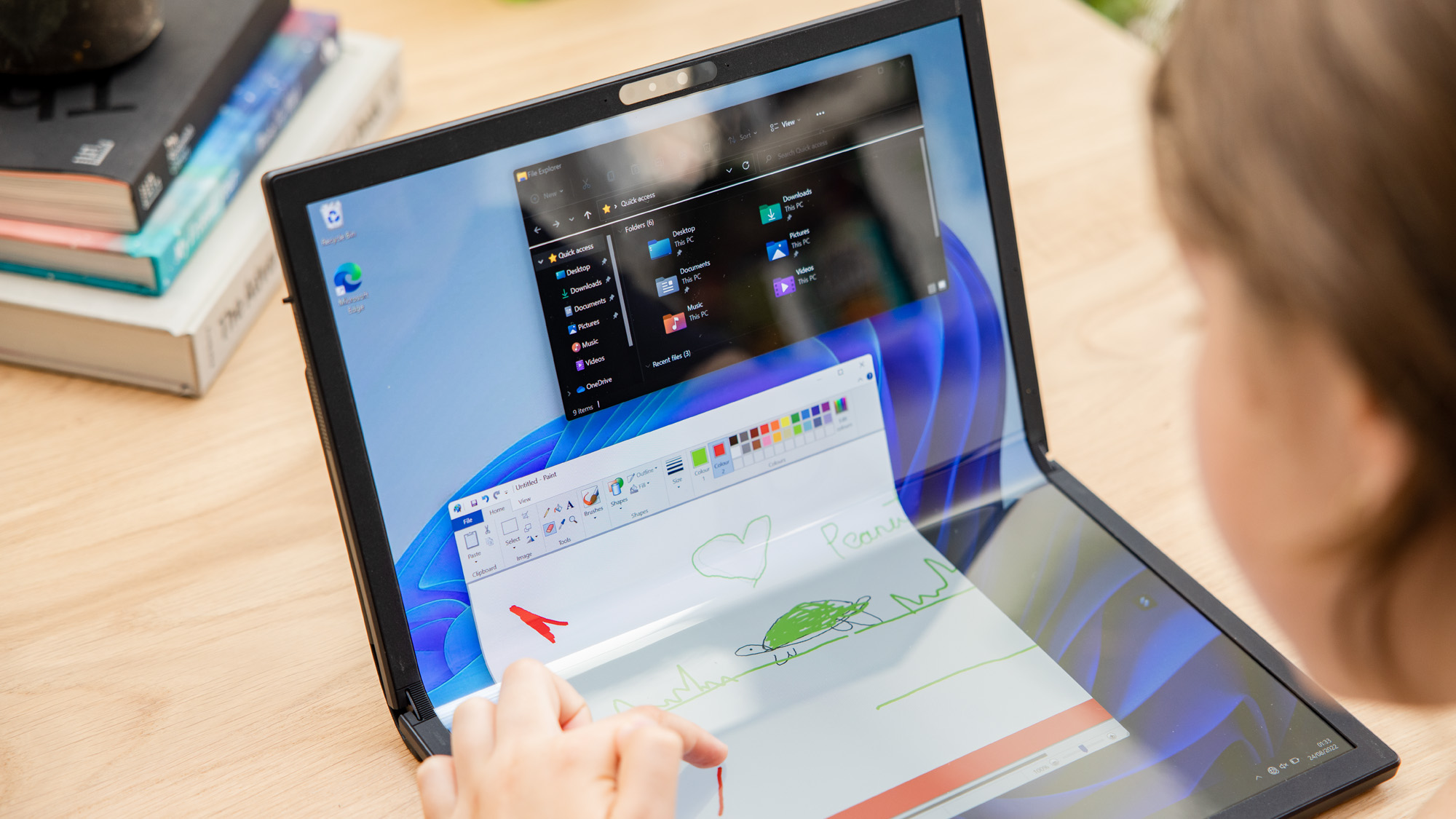
Pros
- Excellent foldable OLED screen
- Incredibly versatile
- Superb battery life
- Great speakers
Cons
- Extremely expensive
- Heavy and bulky
- Not enough ports
- No discrete GPU
The Zenbook 17 Fold OLED is a truly extraordinary device, but it’s not ready for the mainstream yet. A huge price tag is the main thing that counts against it, and the user experience is a little rough around the edges.
But that’s to be expected from a first-gen device that’s only the second ever folding tablet/laptop to ever come to market. The Zenbook 17 Fold’s hinge is impressively durable, and it enables a range of different form factors that simply aren’t possible on the other devices in this list.
You can use it as a huge 17.3in tablet, use the built-in kickstand for hands-free use or fold it in half for a unique scrolling experience. Then there’s the dedicated keyboard accessory, which can create a desktop replacement or attach over half the screen to create a convincing 12.5in laptop experience.
With great battery life and a super audio experience, Asus is onto something good with the Zenbook 17 Fold OLED. But it won’t tempt many people to ditch their traditional laptop or 2-in-1 yet.
FAQ
Should I prioritise the tablet or laptop?
In 2-in-1 devices, compromise is inevitable. If you need to get work done, you should focus on it being a great laptop first and foremost. But if content consumption or online shopping are most important, take a tablet-first approach.
Which one is right for you depends hugely on what you want to do with it. Some of the devices in this article are even capable of more than two main positions, so that’s also worth bearing in mind.
What to consider with a laptop-first design
A convertible laptop will usually have a non-removable screen which flips almost 360 degrees in order to change it into a tablet. This style (shown below) also means you can use it in other ‘modes’ such as ‘tent’ or ‘display’.
Lenovo’s Yoga range is possibly the best known convertible laptop and has been the inspiration for many rivals. Microsoft Surface Book is also laptop first but still has a removable screen so is a more advanced hybrid system. However, 2020’s Book 3 was the last entry in that product line. It’s been replaced by the Surface Laptop Studio, which has three fixed positions instead.
What to consider with a tablet-first design
A convertible tablet is similar to a regular tablet but either has a keyboard which attaches magnetically or a case which creates a laptop-like experience. The keyboard may connect over Bluetooth in some cases.
Microsoft’s Surface Pro and Go are the most obvious, but there are plenty of other Windows options these days. Samsung’s Galaxy Tab S8 Series is another option, but Android still isn’t great for productivity. The limitations of iOS (or iPadOS, as it’s officially known) also hold back the iPad Pro with Magic Keyboard, but it’s a credible alternative.
What specs should I look for?
Much of what you need to look for in a convertible laptop/tablet is the same as for a regular laptop and tablet.
You’ll want to get the best specifications for your money including the latest processor, plenty of memory and storage and a high-quality screen. Make sure you read our reviews to find out more about each device, including benchmark results.
The design, though, is going to be a big part of your buying decision and you need to choose a device which fits your needs best. A laptop-first design is likely to be bigger and heavier but is likely to offer longer battery life (there’s more space for a bigger battery).
This type should also provide a better typing experience and there’s normally more physical ports, including USBs and video outputs.
Although a convertible tablet might not have many physical ports (some still have full-size USB though), they are smaller and lighter than a hybrid laptop making them great for travelling. The trade-off is that using it as a laptop is often fiddly and awkward. Look for one with a clever design and proper keys. A trackpad is also great, even on touchscreens, albeit not a necessity.


